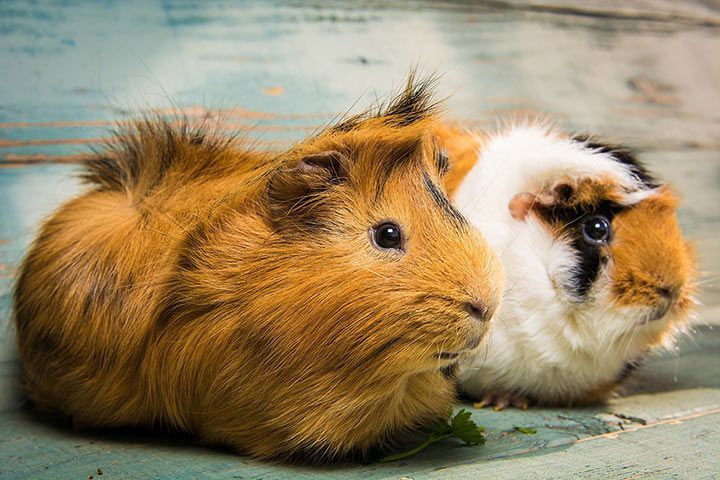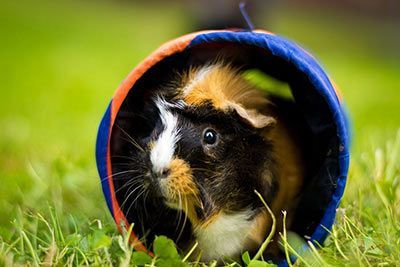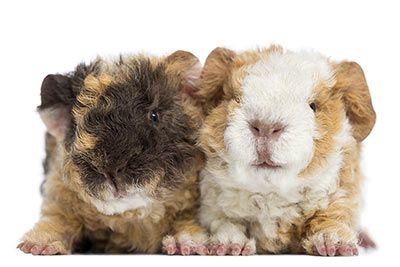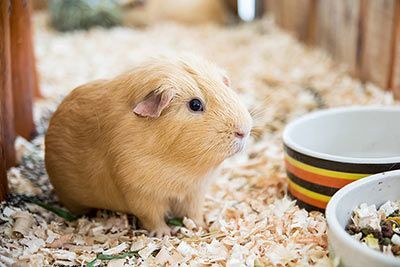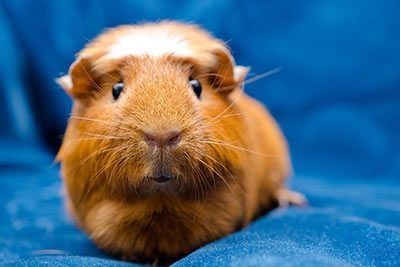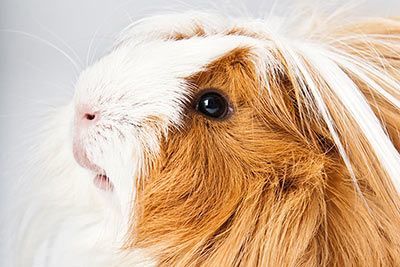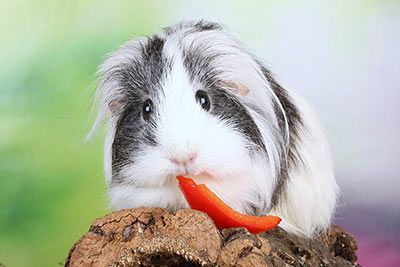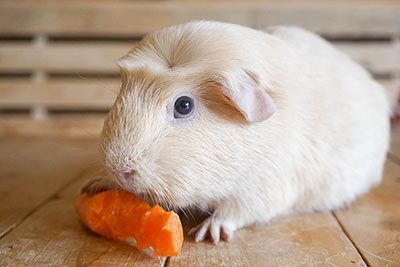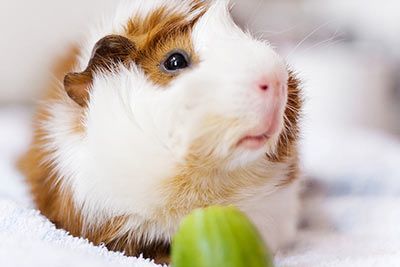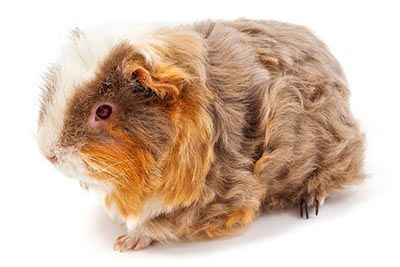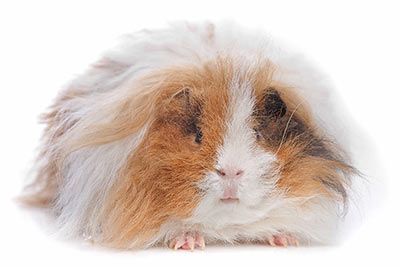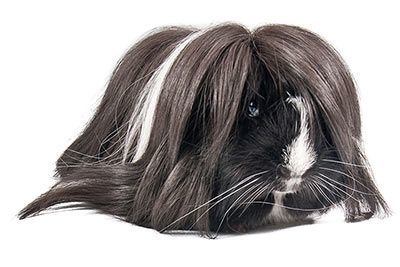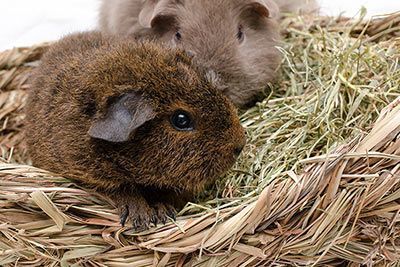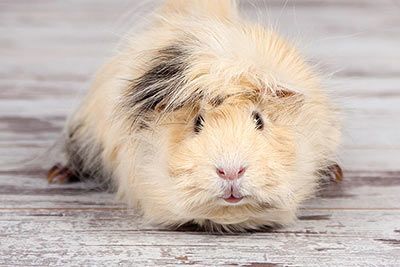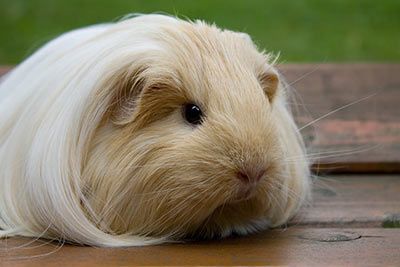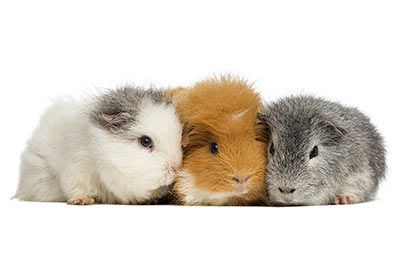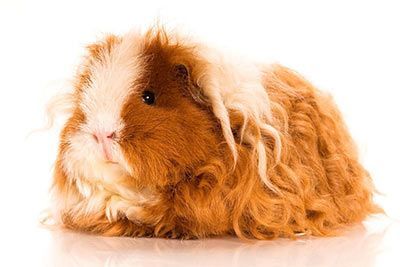Irish Crested
Irish Crested Guinea Pig Breed Profile
| Fur | Short, straight, close |
| Rosettes | Two on the hips |
| Characteristics | Crown |
| Lifespan | 4-6 years |
| Suitable for | Beginners |
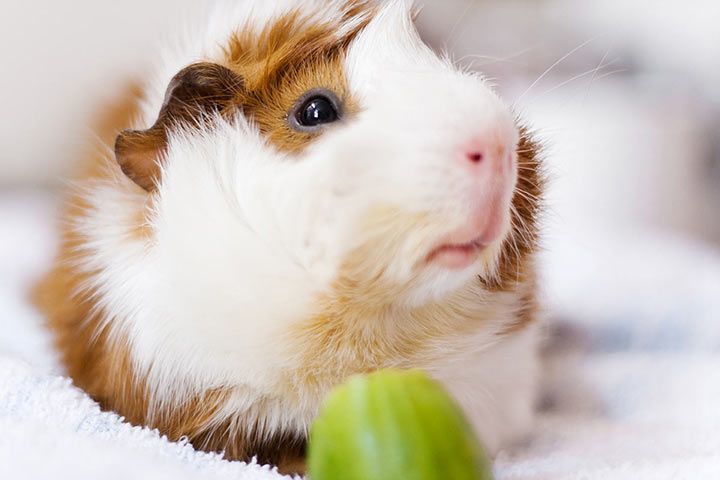
Breed Characteristics
There’s the American Crested (white crest), the English Created (crest same color as coat) and the Irish Crested. How can you tell the three Crested guinea pigs apart? It’s incredible just how many guinea pig breeds there are! They’re not just different when it comes to fur length (short or long) but also the number of whorls (or rosettes) and where these whorls are on the body. They can also have beards or a “comb” on their backs.
Mohawk Hairdo
The Irish, American and English all have short, straight fur and a crest on the forehead. Unlike the other two, the Irish has two whorls at the left and right around the center of its back. This makes the hair point upwards, forming a “comb” on the back. Irish Cresteds have a characteristic “mohawk” hairdo with the crest falling forwards between the ears.
Irish Cresteds are often mistaken for short-haired Peruvians. No wonder, as the two really do look alike. But the main, if minor, difference is that the Irish Crested has two whorls in the middle of its back. In short-haired Peruvians, these are further back towards the hind quarters.
How to Keep Them
The Irish Crested is very attentive and curious. They’re kept in the same way as other short-haired guinea pigs and need the same balanced diet of fresh hay, grasses, herbs, vegetables, fruit, nuts and seeds.
As the Irish is a short-haired guinea pig, it can also be kept outdoors. Of course, there are a few rules and safety measures (cage location, cleanliness etc.) to make sure it stays fit and healthy out of doors.
Fur Care
The guinea pig can mostly keep its short coat clean by itself, so no special grooming is needed. Still, the guinea pig’s fur and skin should be regularly checked to identify any possible illnesses early on.
Fun Facts
This breed is currently not very well-known or popular. It will probably take a while until it’s recognized by breeding associations.
